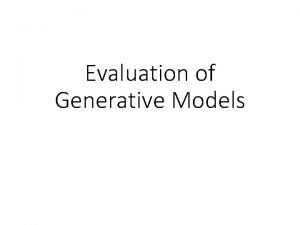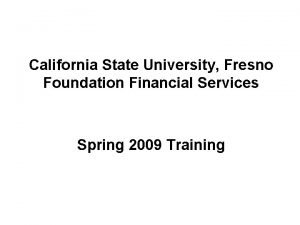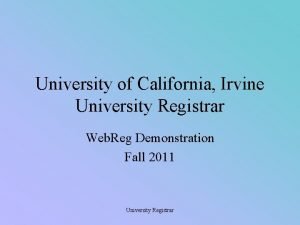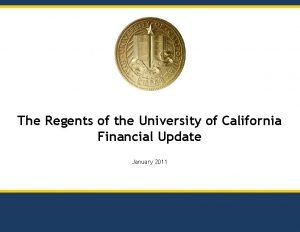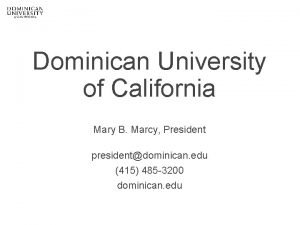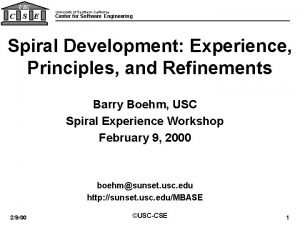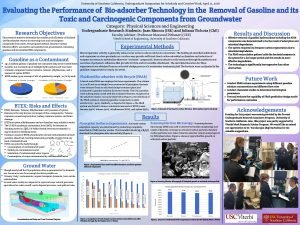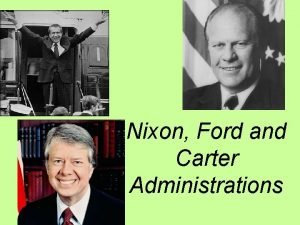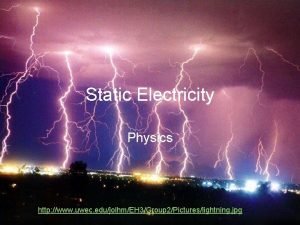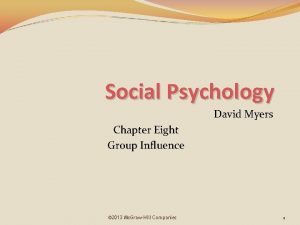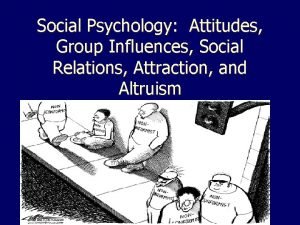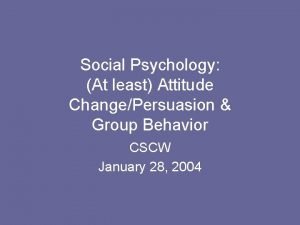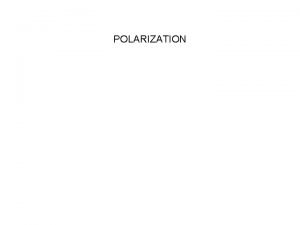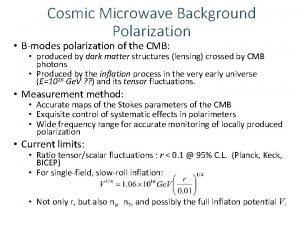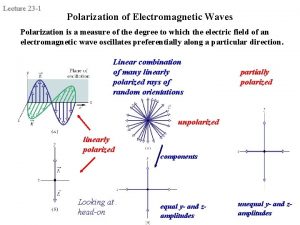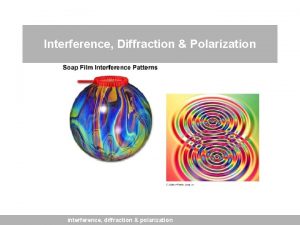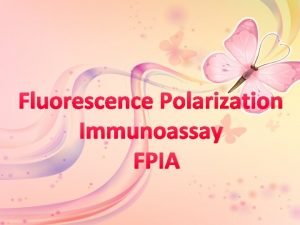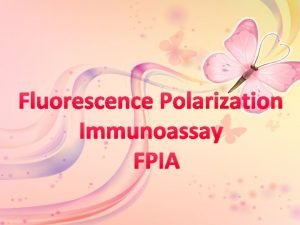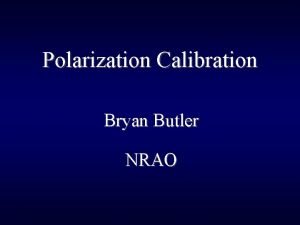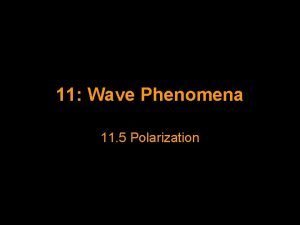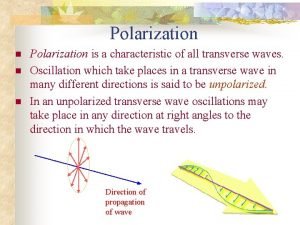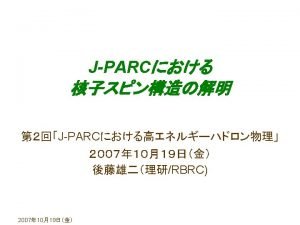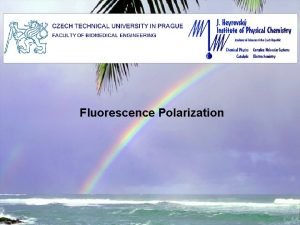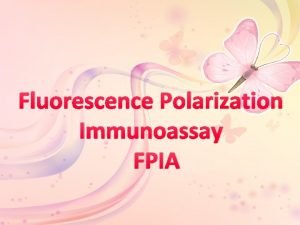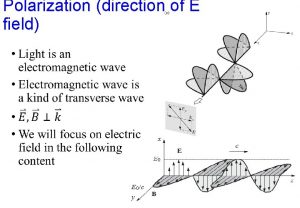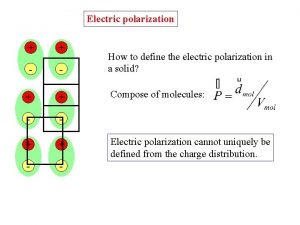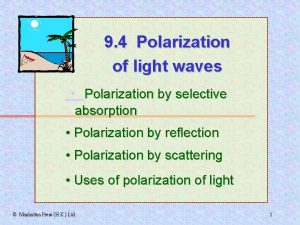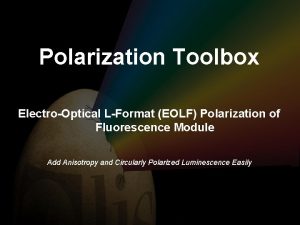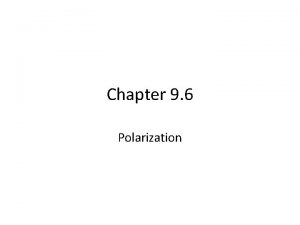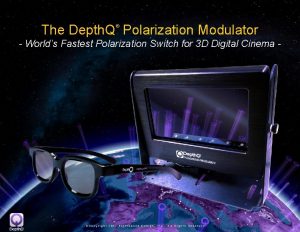Parahydrogen induced polarization Thomas Theis University of California






















- Slides: 22

Parahydrogen induced polarization Thomas Theis University of California Berkeley Physics 250 04/17/2008 1

The para-hydrogen phenomenon �Used to create large polarization from large population differences � 10. 000 fold NMR signal enhancement �High polarization can be exploited in numerous applications ◦ Detection of reaction intermediate (especially in hydrogenations) ◦ Characterization of gas flows (e. g. micro engines, catalyst beds) ◦ Characterization of fuel cells 2

Outline �Production of para-H 2 �Density Matrix description �Pasadena vs. Altadena �Focus on basics rather than applications �overcoming hydrogenations � Reference: Clifford R. Bowers, Sensitivity Enhancement Utilizing Parahydrogen, Encyclopedia of Nuclear Magnetic Resonance 2002, 9, 750 -770. 3

Dihydrogen wavefunctions Nuclear wavefunctions: symmetric antisymmetric total = e r n has to be symmetric (aacording to Dima, antisymmetric according to the literature) ortho states live in the odd rotational states para state lives in the even rotational states (including J=0) 4

Production of non-equilibrium ortho/para hydrogen mixtures � Transitions between ortho and para hydrogen are symetrically forbidden (para singlet ortho triplet) non-equilibrium mixtures are long lived � To induce the transition catalysts at low temperatures break the symmetry � Once the hydrogen desorbs from the catalyst the ortho/para ratio is conserved and given by 5

Para-hydrogen enrichment 51% para @ 77 K 99. 9% para @ 4 K Percentage composition of ortho and para hydrogen as function of temperature 6

Pairwise Hydrogenation using a catalyst e. g. Wilkinsons catalyst 7

Pasadena Parahydrogen and Synthesis Allow Dramatically enhanceed Nuclear allignment. First published in 1986 from Bowers and Weitekamp at Caltech in Pasadena 8

Direct product space reminder 9

General Hamiltonian for two spin systems and it’s Eigenstates Rotating field Hamiltonian: ωz 1, ωz 2: rotating frame chemical shifts D: dipolar coupling constant J: scalar coupling constant Eigenstates: Weak coupling limit: 10

Transition probabilities 11

Density Matrix for pure para-H 2 adduct For ® 0 (weak coupling) 12

Adduct Density Matrix from para -H 2 with mole fraction χp For f =0 i. e. thermalized ortho/para mixture where p = ¼ and ® 0 13

Pasadena correlation diagram 14

Time evolution of the adduct density Matrix observed NMR signal 15

Pasadena signal from weakly coupled spin systems Evolution under J coupling and detection: Maximized for 45° pulse 16

Obtained spectra 17

Comparison to thermal signal After 90° pulse Evolution under J coupling and detection For f=1 the ratio evaluates to 2ε = 31240 ! 18

Altadena (just next to Pasadena) Adiabatic Longitudinal Transport After Dissociation Engenders Net Allignment 19

What have we learned? Density Matrix formalism is a very poweful tool to make accurate predictions of the NMR signals 20

A step further from Hydrogenations 21

Thank‘s for your attention Thank‘s to �Scott Burt and Louis Bouchard �Hattie, Pete, Ngok Do �Dima 22
 Phase diagram of carbon dioxide
Phase diagram of carbon dioxide Theis statement example
Theis statement example Theis reference
Theis reference Thomas mocker and thomas stewart
Thomas mocker and thomas stewart California state university long beach nursing
California state university long beach nursing California state university fresno foundation
California state university fresno foundation Web registrar uci
Web registrar uci Ccu final exam schedule
Ccu final exam schedule University of california
University of california Mary marcy dominican university
Mary marcy dominican university California university of pennsylvania global online
California university of pennsylvania global online University of southern california
University of southern california University of southern california
University of southern california Regents of university of california v. bakke
Regents of university of california v. bakke Module 74 ap psychology
Module 74 ap psychology Deindividuation psychology definition
Deindividuation psychology definition Dispositional attribution
Dispositional attribution Charge by polarization
Charge by polarization Social inhibition
Social inhibition Groups tend to loaf less when
Groups tend to loaf less when Altruistic
Altruistic Groupthink vs group polarization
Groupthink vs group polarization Group polarization example
Group polarization example


